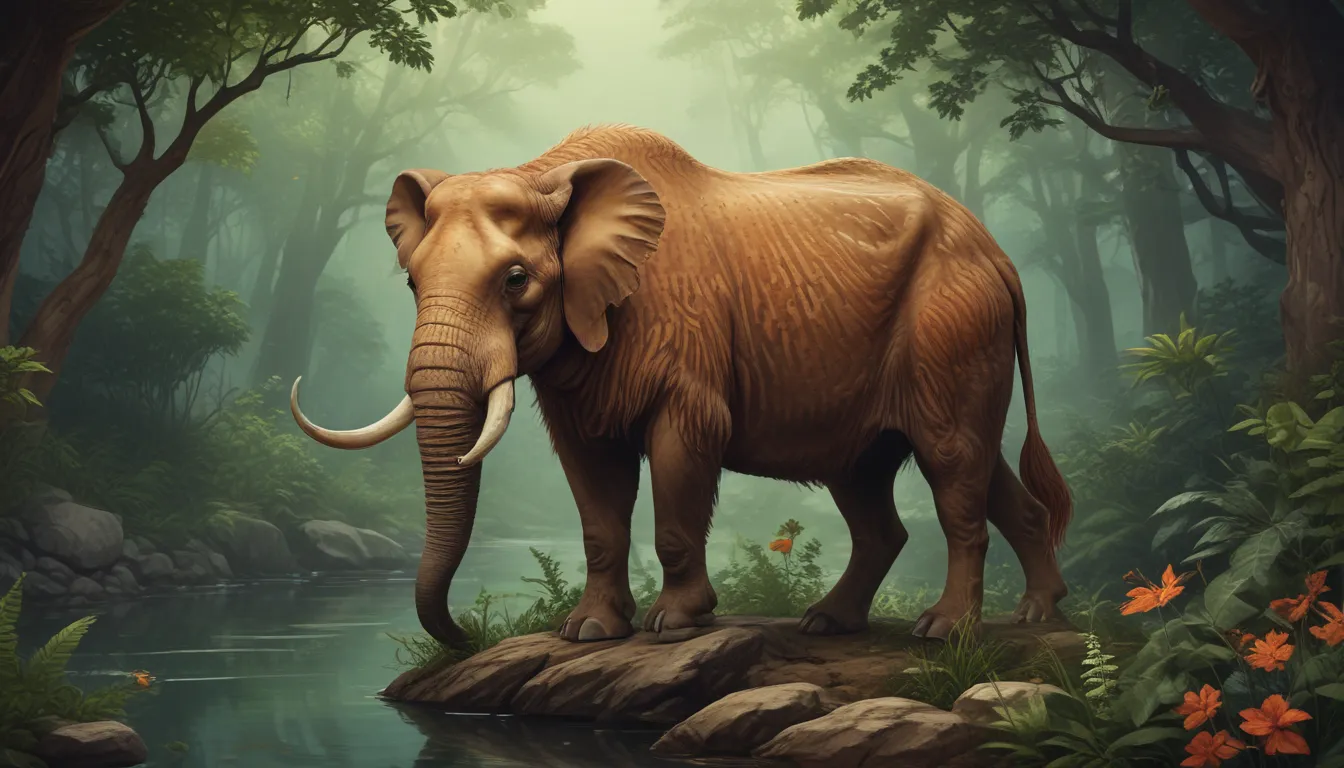A Note About Images: The images used in our articles are for illustration purposes only and may not exactly match the content. They are meant to engage readers, but the text should be relied upon for accurate information.
Mammals have captivated our attention for centuries with their remarkable diversity and unique characteristics. From the tiniest shrew to the massive blue whale, these creatures exhibit a wide range of adaptations, behaviors, and habitats. As fellow members of the class Mammalia, humans share a special connection with these fascinating animals. In this article, we will explore 17 mind-blowing facts about mammals that showcase their exceptional adaptations, extraordinary abilities, and vital role in ecosystems worldwide. Get ready to immerse yourself in the wonders of the mammalian world!
Unveiling the World of Mammals
- Mammals are a unique group of animals that have hair or fur, give live birth, and nurse their young with milk. Their diverse adaptations, from flying bats to egg-laying platypuses, make them truly captivating creatures.
- From the swift cheetah to the melodious humpback whale, mammals display an array of remarkable abilities. Their varied communication methods, specialized diets, and distinctive behaviors make them truly awe-inspiring animals.
Mammals: A World of Diversity
Mammals stand out as the only animals that have hair or fur covering their bodies, providing them with the means to regulate body temperature and protect themselves from the environment.
A Miracle of Nature: Live Birth and Nursing
The ability to give live birth and nurse offspring with milk sets mammals apart from other animals. This unique parental care is a defining feature of this diverse group of creatures.
The Mighty Blue Whale: A Colossal Wonder
The blue whale, the largest mammal to have ever existed, is not only the largest living mammal but also the largest animal to have roamed the Earth. With astounding dimensions, it truly stands out as a remarkable creature.
Bats: Masters of Flight
Bats, the only mammals capable of sustained flight, possess specialized wings that enable them to navigate the skies. These nocturnal creatures play crucial roles in pollination and insect control, showcasing their ecological significance.
The Enigmatic Platypus: An Evolutionary Marvel
The platypus, one of the few mammals that lay eggs, boasts features that blur the line between mammals and reptiles. This intriguing creature is a living example of evolutionary uniqueness.
The Majestic African Elephant: Symbol of Power
The African elephant, the largest land mammal, commands attention with its impressive size and strength. These magnificent creatures epitomize power and grace in the animal kingdom.
Sonic Wonders: Dolphin and Whale Communication
Dolphins and whales, known as cetaceans, showcase high intelligence through their complex communication system of clicks, whistles, and songs. This intricate network plays a vital role in their social interactions and hunting strategies.
Human Marvels: Conscious Breathing
Humans stand out as the only mammals capable of consciously controlling their breathing. This remarkable ability enables activities such as singing, speaking, and playing musical instruments.
Dental Diversity: Adaptations for Diets
Mammals exhibit a diverse range of dental structures tailored to their specific diets. From sharp carnivorous teeth in predators like lions to flat herbivorous teeth in animals like cows, these adaptations allow efficient consumption and processing of food.
The Sloth’s Slumber: A Lesson in Relaxation
Sloths, renowned for their leisurely lifestyle, spend up to 20 hours a day sleeping while hanging upside down from trees. These arboreal mammals epitomize relaxation in the animal kingdom.
The Resilient Snow Monkey: Surviving the Elements
The Japanese macaque, or snow monkey, thrives in Japan’s chilly mountainous regions, showcasing adaptations to cope with freezing temperatures. Their thick fur and specialized social structures aid in their survival.
Speedy Cheetahs: Masters of the Chase
Cheetahs, the fastest land mammals, can reach speeds of up to 70 miles per hour in short bursts. Their agility and speed make them formidable hunters on the African savannah.
Anteaters: Tongues of Marvel
Anteaters possess tongues that can extend up to two feet in length, allowing them to reach deep into anthills and termite mounds for food. Their specialized tongues are a marvel of nature’s adaptation.
Communication Wonders: Vocalizations and More
Mammals have evolved diverse communication methods, including vocalizations, body language, and scent marking. These varied strategies enable them to convey information and messages effectively within their species.
Egg-Laying Marvels: Echidnas and Platypuses
Joining the platypus, the echidna, or spiny anteater, is one of the select few mammal species that lay eggs. These unique creatures in Australia boast adaptations like spines and long snouts for capturing prey.
Melodic Humpback Whales: Songs of the Sea
Humpback whales enchant with their complex and haunting songs, sung by males during mating season. These melodic compositions carry across vast distances through the ocean, showcasing the whales’ vocal prowess.
Blood-Feeding Bats: Nature’s Equilibrium
The vampire bat, the only mammal feeding exclusively on blood, plays a crucial role in ecosystem balance by controlling populations of other animals. Their specialized anatomy prevents blood clotting, enabling efficient feeding.
Unveiling the Magic of Mammals
Mammals astonish with their incredible adaptations and diverse characteristics, whether it’s the tiny bat or the colossal whale. Their presence across various habitats highlights their adaptability and resilience in diverse environments.
FAQs: Delving Deeper into Mammal Facts
- What is the largest mammal on Earth?
-
The blue whale holds the title as the largest mammal on Earth, with lengths reaching up to 100 feet and weights around 200 tons.
-
Are humans considered mammals?
-
Yes, humans belong to the mammalian class, sharing this classification with animals like dogs, horses, and dolphins.
-
How many mammal species exist?
-
Approximately 6,400 known mammal species exist, with ongoing discoveries as scientists explore remote corners of the world.
-
Do mammals lay eggs?
-
While most mammals give birth to live young, a few exceptions like monotremes, such as the platypus and echidna, lay eggs.
-
Can mammals fly?
- While mammals do not fly like birds or insects, certain species like bats have evolved the ability for sustained flight.
Engage with the Marvels of Mammals
Mammals continue to inspire awe with their diverse characteristics and remarkable abilities. Their significance in maintaining ecological balance underscores their importance in the natural world. From the extraordinary adaptations of bats to the intricate social structures of elephants, mammals offer endless opportunities for exploration and discovery. Embrace the wonders of nature through the lens of mammals, celebrating their unique presence on our planet.






